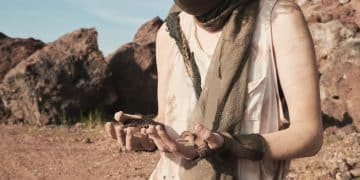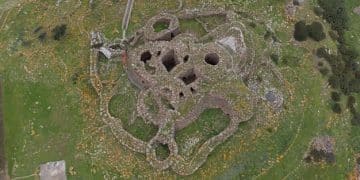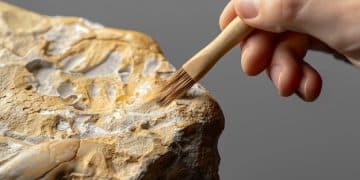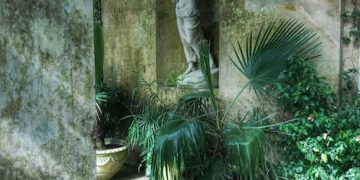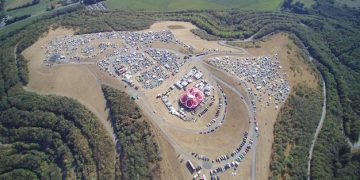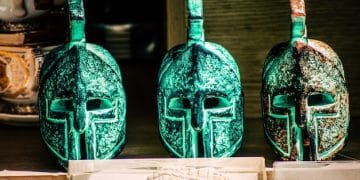Decoding Ancient American Art: Petroglyph Insights
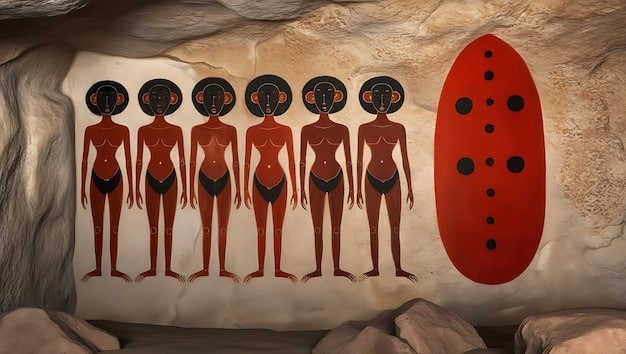
Newly discovered petroglyphs offer unprecedented insights into the complex spiritual and social beliefs of pre-Columbian cultures across the Americas, providing a visual lexicon of their worldview and societal structures. These ancient rock carvings serve as invaluable archaeological records, expanding our understanding of indigenous artistic expression and cosmological paradigms.
The intricate narratives etched into stone surfaces across the Americas are much more than mere artistic expressions; they are profound windows into the minds, cosmologies, and daily lives of civilizations long past. This journey into decoding ancient American art: what newly discovered petroglyphs reveal about the beliefs of pre-Columbian cultures promises not just historical illumination, but a deeper empathy for the intricate tapestry of human experience.
The enduring enigma of pre-Columbian rock art
Petroglyphs, images carved into rock, represent one of the most enigmatic and enduring forms of artistic expression from pre-Columbian Americas. These ancient markings, found in diverse environments from desert canyons to rainforest shelters, reflect sophisticated symbolic systems that communicated complex ideas across generations. Unraveling their meaning involves a multifaceted approach, blending archaeology, anthropology, and indigenous knowledge.
A diverse canvas: regional variations
The vast geographical expanse of the Americas meant that petroglyphs developed distinct regional styles and thematic preoccupations. From the geometric patterns of the Great Basin to the anthropomorphic figures of the Amazon, each region’s rock art provides unique clues to local belief systems and cultural practices.
- Southwest United States: Often features spiritual beings, animal spirits, and astronomical alignments.
- Andean Region: Depicts mythical creatures, deities, and agricultural rituals linked to fertility.
- Mesoamerica: Primarily associated with calendrical systems, elite narratives, and dynastic histories.
- Amazon Basin: Rich in zoomorphic representations, especially serpents and jaguars, signifying shamanic visions.
These variations underscore the localized interpretations of universal themes such as creation, death, and the supernatural. Understanding these regional differences is crucial for a nuanced decoding of their embedded beliefs.
The recent discovery of extensive petroglyph sites, particularly in remote and previously inaccessible areas, continually refreshes our understanding. These new finds often present previously unrecorded symbols or new contexts for known iconography, posing fresh challenges and exciting opportunities for researchers. The consistent themes across disparate regions, such as the veneration of celestial bodies or the depiction of shamanic journeys, suggest underlying shared beliefs despite geographical separation.
The interpretation of ancient rock art is not without its challenges. The absence of accompanying written texts for many cultures means that interpretations rely heavily on contextual analysis, ethnographic analogy, and the insights of contemporary indigenous communities. The abstract nature of many designs also leaves room for multiple plausible interpretations, emphasizing the dynamic and layered meanings held by these ancient symbols.
These complex symbols hint at a world deeply intertwined with spiritual realms, where boundaries between the physical and metaphysical were fluid. This comprehensive study of petroglyphs opens doors to understanding the deep spiritual roots of these societies.
Techniques and materials: permanence in stone
The creation of petroglyphs was a labor-intensive process, reflecting the deep significance attributed to these images. Ancient artists employed various techniques, primarily pecking, rubbing, and incising, utilizing tools made from harder stones or bones. The choice of technique often depended on the type of rock surface, the desired effect, and the cultural traditions of the artists.
Carving tools and methods
The primary method involved using a percussor stone to peck away at a darker rock surface, revealing lighter rock underneath. This created a visible contrast. For more detailed work, finer-pointed tools were used for incising or scratching lines into the rock.
- Percussion: Employing a hard stone to strike the rock surface, creating a series of small pits that form the image.
- Abrasion: Rubbing a stone tool against the rock to create grooves or polish surfaces.
- Incising: Scratching fine lines with a sharp point, often used for intricate details.
The durability of these materials—primarily sandstone, basalt, or granite—ensured that these artistic creations could endure for millennia, providing a lasting record of cultural beliefs. The intentional choice of rock faces, often in prominent or spiritually significant locations, further emphasizes the ritualistic importance of their creation.
The materials used for carving were typically those readily available in the local environment, highlighting the ingenuity and resourcefulness of ancient artists. The process itself was likely communal, possibly involving ritualistic practices, underscoring the social dimension of petroglyph creation. The long-term exposure to elements means that many petroglyphs have faded or been obscured, making preservation and documentation critical.
Beyond the physical act of carving, the choice of location for petroglyphs often held profound meaning. Sites were frequently selected for their natural acoustics, stunning vistas, or proximity to sacred springs, suggesting a deliberate integration of art, environment, and spirituality. This deliberate placement further elevates petroglyphs beyond mere art, positioning them as integral components of the spiritual landscape.
Symbols of the cosmos: astronomical and calendrical beliefs
Many newly discovered petroglyphs carry clear astronomical implications, revealing the sophisticated understanding of celestial phenomena held by pre-Columbian cultures. The alignment of certain carvings with solstices, equinoxes, or specific stellar formations points to their use as calendrical devices or markers for important seasonal rituals. These symbols provided a means for prediction, organization of agricultural cycles, and connection to cosmic order.
Celestial alignments and spiritual guidance
The consistent appearance of sun disks, moon crescents, and star-like patterns across vast geographical areas suggests a widespread veneration of celestial bodies. These motifs often correlated with agricultural cycles, hinting at a deep symbiotic relationship between celestial observations and human sustenance.
- Sun Symbols: Represent life, power, and the primary deity for many cultures.
- Moon Cycles: Linked to fertility, agricultural planning, and feminine deities.
- Constellations: Often depicted as mythical animals or ancestors guiding spiritual journeys.
These astronomical observations were not purely scientific but were deeply embedded in spiritual beliefs, serving as pathways to understanding the divine order and maintaining cosmic harmony. The careful placement of petroglyphs to align with specific celestial events speaks volumes about the advanced observation skills of these ancient peoples.
The notion that the cosmos actively influenced terrestrial events was a fundamental aspect of pre-Columbian belief systems. Petroglyphs served as tangible expressions of this connection, providing visual representations of celestial powers and their earthly manifestations. The recurring depiction of the “cosmic tree” or the “world axis” further reinforces the idea of a structured, multi-layered universe connected through these celestial energies.
In many instances, petroglyphs function as visual calendars, marking the passage of time and the appropriate moments for specific rituals or agricultural activities. The integration of calendrical data with spiritual narratives demonstrates the holistic worldview of pre-Columbian societies, where all aspects of existence were interconnected and imbued with sacred meaning. This intricate symbiosis between observation and spiritual understanding is a testament to their deep connection with the natural world.
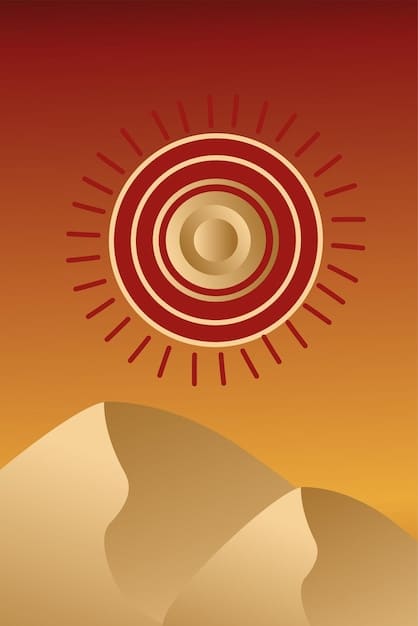
Guardians of the spirit world: shamanism and transformation
The prevalence of anthropomorphic figures transitioning into animal forms, or vice versa, strongly suggests the presence and importance of shamanic practices within pre-Columbian cultures. Petroglyphs served as visual records of altered states of consciousness, spirit journeys, and the transformative power of shamans who acted as intermediaries between the human and spirit realms. This visual lexicon offers a rare glimpse into the spiritual technologies of ancient America.
Shamanic journeys and animal spirits
Many carvings depict figures with animal attributes, such as bird-headed humans or jaguars with human hands, signifying profound transformations and the acquisition of animal powers during shamanic trances. These images often relate to healing, prophecy, and access to hidden knowledge.
- Zoomorphic Blends: Figures combining human and animal traits, representing shamanic metamorphosis.
- Spirit Guides: Animals like serpents, birds, or jaguars depicted as companions or guides in the spiritual journey.
- Entoptic Phenomena: Geometric patterns that mimic visions experienced during altered states of consciousness, indicating shamanic trances.
The consistent portrayal of these themes across different regions points to a widely shared belief in the interconnectedness of all life and the ability of certain individuals to traverse the boundaries between worlds. These symbols, far from being mere art, were vital components of religious rituals and initiation ceremonies.
The shaman’s role was central to many pre-Columbian societies, acting as healers, spiritual leaders, and interpreters of the divine will. Petroglyphs often served as mnemonic devices for these individuals, helping them recall complex rituals or visions. The repetitive nature of certain motifs might suggest a standardized visual vocabulary to communicate specific shamanic experiences or teachings.
The depiction of “spirit flights” or journeys to the underworld or sky world provides evidence of complex cosmological models. These journeys were undertaken by shamans to retrieve lost souls, communicate with ancestors, or gain insights into future events. The vivid and often surreal imagery in petroglyphs captures the intensity and profound significance of these spiritual expeditions, illuminating a worldview where spiritual dimensions profoundly influenced daily life and survival.
Narratives of power and community: social and historical records
Beyond the spiritual, many newly discovered petroglyphs function as records of social structures, historical events, and the exercise of power within pre-Columbian communities. These carvings can depict narratives of warfare, leadership, community gatherings, or symbols of specific clans and lineages, providing an invaluable historical archive in stone. They offer a direct cultural voice from the past, detailing societal norms and hierarchies.
Communal life and leadership symbols
The presence of large group scenes, figures adorned with elaborate regalia, or distinct clan symbols indicates their role in reinforcing social cohesion and communicating communal identity. These carvings likely served as public declarations, reinforcing social order and transmitting cultural values across generations.
- Group Scenes: Depicting ceremonies, hunts, or daily activities, emphasizing communal bonds.
- Leadership Iconography: Symbols associated with chiefs, warriors, or priests, often signifying status and authority.
- Clan Markers: Distinctive signs representing family lines or tribal affiliations, signifying belonging and territorial rights.
These petroglyphs function as visual narratives, preserving memories, celebrating achievements, and affirming the identity of the community for posterity. They are not merely passive records but active participants in the cultural life of the people who created them.
The selection of specific sites for these social narratives, often in prominent or highly visible locations, suggests their role in public communication and instruction. They might have been used during initiations, historical recitations, or territorial claims, serving as a powerful medium for social instruction and the transmission of cultural knowledge. The public nature of these depictions points to communal ownership of the narratives they embody.
The study of these narrative petroglyphs helps reconstruct aspects of pre-Columbian social organization, including kinship systems, political structures, and inter-group relations. By analyzing recurrent themes and figures, researchers can begin to piece together the complex societal dynamics that shaped these ancient civilizations, offering a glimpse into their daily struggles and triumphs as a collaborative record.
The sacred landscape: petroglyphs as territorial and ritual markers
Petroglyphs are often intrinsically linked to the landscape in which they are found, suggesting their function beyond mere artwork to serve as territorial markers, sacred sites, or pathways for ceremonial processions. The choice of specific rock formations, caves, or prominent outcrops was deliberate, transforming natural features into active components of cultural and spiritual geography.
Connecting land and spirit
The placement of petroglyphs can delineate tribal boundaries, mark sacred hunting grounds, or indicate routes to important resources. This geographical integration suggests a deep spiritual connection to the land, where the physical environment was imbued with sacred significance.
- Boundary Markers: Indicating territorial claims or resource access points.
- Ritual Venues: Sites used for ceremonies, initiations, or seasonal gatherings.
- Path Markers: Guiding routes to sacred places or significant natural features.
These environmental connections highlight a holistic worldview where the separation between nature and culture was permeable, and the landscape itself was seen as a living entity. The petroglyphs act as nodes within this sacred network, guiding interactions with the environment.
The deliberate choice of specific rock surfaces, often those that caught the light at certain times of day or those near water sources, further emphasizes the intentionality behind their placement. These sites became focal points for ceremonies, storytelling, and the reinforcement of collective memory, embedding the art within the very fabric of daily life and ritual. This strategic placement reveals a sophisticated understanding of their environment.
The discovery of new sites often redefines our understanding of ancient territorial ranges and migration patterns. By mapping the distribution of specific petroglyph styles or motifs, archaeologists can trace cultural interactions and movements, providing insights into the dynamic historical geography of pre-Columbian America. Ultimately, these petroglyphs transform landscapes into living museums, echoing the voices and beliefs of past generations.
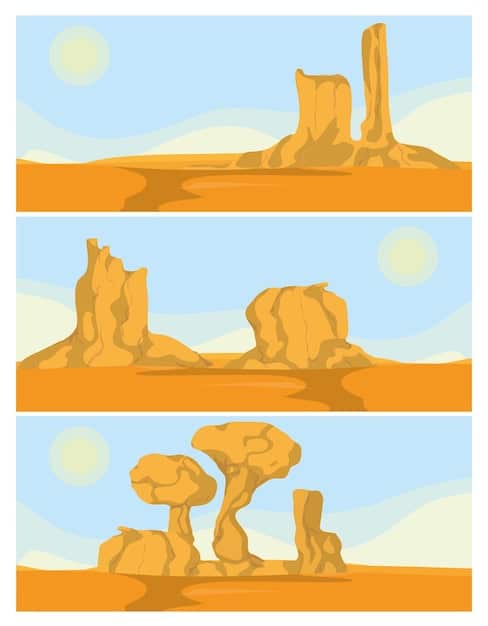
Beyond interpretation: ethical considerations and preservation
As new petroglyphs are discovered and studied, the ethical imperative of their preservation and respectful interpretation becomes paramount. These ancient arts are not merely archaeological curiosities but living heritage, deeply meaningful to contemporary indigenous communities. The challenges of weathering, vandalism, and encroaching development necessitate robust conservation strategies and collaborative research efforts.
Preserving the silent voices
The fragile nature of rock art demands careful techniques for documentation and conservation. Climate change, erosion, and human impact pose significant threats, underscoring the urgent need for protective measures and public education.
- Documentation: Non-invasive techniques like 3D scanning and photogrammetry for detailed records.
- Conservation: Protecting sites from erosion, vandalism, and environmental degradation.
- Collaboration: Engaging indigenous communities in research and site management to ensure respectful interpretation and preservation of cultural heritage.
This collaboration is crucial, as indigenous knowledge often provides invaluable insights into the meanings and contexts of these ancient symbols, ensuring that interpretations are culturally sensitive and accurate. Their continued involvement is essential for ethical discovery and study.
The ownership and access to these sites are complex issues, often involving land rights and the spiritual significance of the locations for descendant communities. Researchers must navigate these sensitivities with respect and a commitment to shared stewardship, ensuring that the benefits of discovery are shared and that cultural protocols are honored. This collaborative approach ensures that the interpretation is not only academically sound but also culturally resonant.
The future of decoding ancient American art lies in interdisciplinary approaches that combine scientific rigor with indigenous wisdom. By fostering genuine partnerships and prioritizing the long-term preservation of these invaluable cultural treasures, we can continue to unlock the profound messages etched in stone, enriching our understanding of human creativity, resilience, and spiritual depth for generations to come. The responsibility of studying these historical artifacts now falls on our shoulders to ensure their legacy.
| Key Insight | Brief Description |
|---|---|
| 🎨 Diverse Styles | Regional variations in petroglyphs reflect distinct cultural beliefs and environmental influences across the Americas. |
| ✨ Spiritual Narratives | Many carvings depict shamanic journeys, spirit transformations, and interactions with the supernatural world. |
| 🌌 Cosmic Clues | Astronomical symbols and alignments reveal sophisticated calendrical knowledge and celestial veneration. |
| 🤝 Ethical Preservation | Ensuring the respectful study and conservation of petroglyphs through community collaboration is crucial. |
Frequently Asked Questions About Ancient American Petroglyphs
▼
Petroglyphs are ancient art forms made by carving, pecking, or incising images into rock surfaces. They are found globally, but in the Americas, significant concentrations are found across the Southwest US, Andean regions, Mesoamerica, and the Amazon Basin, often near water sources or in sheltered rock overhangs.
▼
By studying recurring symbols, themes, and their contexts, petroglyphs reveal insights into ancient belief systems. They depict cosmological views, spiritual practices like shamanism, social structures, historical events, and sacred connections to the landscape, offering a visual record of ancient worldviews and values.
▼
Challenges include the absence of written historical context, the abstract nature of many symbols, and distinguishing between ritualistic and mundane purposes. Researchers often rely on ethnographic analogies, archaeological context, and collaboration with contemporary indigenous communities for nuanced interpretation.
▼
Petroglyphs often served multiple purposes. While aesthetically powerful, they were also functional, acting as calendrical markers, territorial signs, records of historical events, or components of spiritual rituals. Their integration into the landscape suggests a deep connection between art, belief, and daily life in pre-Columbian societies.
▼
Protection involves a combination of documentation (3D scanning, photography), physical conservation (stabilizing rock surfaces, fencing), and public education. Ethical guidelines also emphasize involving descendant indigenous communities in the management and interpretation of these sites to ensure their cultural integrity and preservation.
Conclusion
The ongoing discovery of new petroglyphs across the Americas continues to shatter preconceived notions about pre-Columbian cultures, revealing their immense sophistication, spiritual depth, and complex social structures. These ancient etchings are not just relics of a forgotten past but living testaments to human ingenuity and the enduring quest for meaning. By painstakingly decoding these visual narratives, we gain not only historical knowledge but also a profound appreciation for the rich tapestry of human experience that continues to unfold from these silent, stony witnesses.
